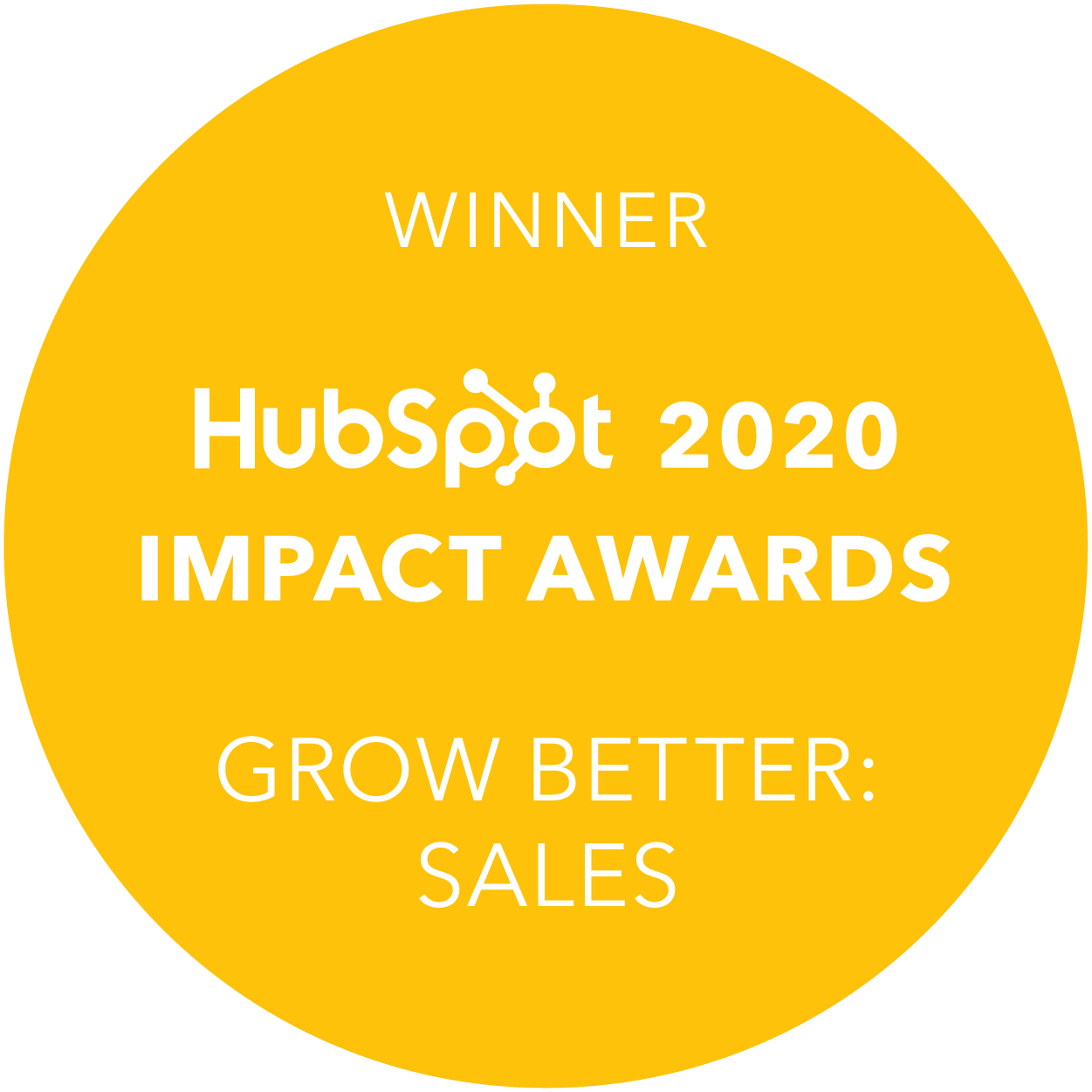Monitoring your business’ social media presence is incredibly important. You need to respond to people talking about your brand and understand how people view your company. Social media isn’t this magical fairy dust that makes business leads come rushing in for your company.
It’s hard work! It requires time and effort, often across multiple departments and amongst multiple employees.
This blog will help you formulate a plan whereby in ten minutes a day, you can monitor the social media information you need within a tight, streamlined strategy.
Consider it the “8 Minute Abs” of social media. How can you best take advantage of the limited time you have in a day to get the best results possible? After reading this blog, you will be able to develop your own, solid routine that works for you.
In this blog we will cover
- Why Monitoring Matters
- Who Should Monitor
- Listening & Responding
- Setting Your Goals
- Prepping Your New Routine
- Your 10-Minute Checklist
1: Why Monitoring Matters
72% of people who complain on Twitter expect a response within an hour.
Sometimes we forget that all those little profile avatars whizzing through our social media news feeds are actually humans. We forget that social media is meant to be just that -- social. The reason why monitoring is so important is because it puts the social back in social media. Brands and individuals who publish without listening are just screaming through a megaphone with no consideration for others. You have to be sensitive to what people actually want from you or your brand, or else you might head in a direction your target audience actually doesn’t enjoy or can’t relate to.
For example, monitoring is a great outlet for crowdsourcing questions. When you listen into your prospects’ or customers’ thoughts, you’ll be able to craft better marketing campaigns, close more deals, improve your products or services, and foster happier customers. Monitoring is also a great way to avoid disaster. If a local, national, or worldwide tragedy occurs, you’ll want to be the first to know so you can pause all marketing messages and offer up actual human emotions. Your fan base will usually point something out before you even have time to realise it, and your level of empathy and response time will either confirm or renounce a person’s feelings about your brand.
As it turns out, people also have some pretty high standards when it comes to response time. Especially when they’ve got a bone to pick with your brand. According to charts published on Search Engine Watch, 70% of surveyed Twitter users expect a response from brands they reach out to on Twitter, and of those users, 53% want that response in under an hour. In fact, the percentage of people who expect a response within the hour increases to 72% when they’re issuing a complaint.
Social media can’t be ignored. People are talking about your brand, your products or services, your competitors, your industry, and your employees -- whether you like it or not. These conversations happen candidly in real life, which turns into threads and discussion groups on social media. Instead of ignoring these conversations, wouldn’t you want to jump in and have a say in where that conversation goes? If someone complains about your brand, wouldn’t you want to know why so you can improve in the future? The bottom line is that monitoring matters, and it matters for more than just social media managers. In the next section we’ll jump into who exactly should be monitoring social media within your company, what they should be monitoring, and why.
2: Who Should Monitor
Marketing Teams
There’s a reason why marketing teams have historically owned a brand’s social media accounts. This team needs to think about a brand’s overall image. The brand’s tone, colors, fonts, and relationships might be pre-determined with the help of PR professionals, designers, and writers on your marketing team. Beyond brand image, Marketing needs to think about generating visits, leads, and customers on a daily basis. Growing the top of the funnel and bringing in a new audience on social media month over month helps to hit key numbers throughout the entire funnel.
However, social media doesn’t just belong to Marketing anymore. Actions that a social media manager take can seriously impact all other departments such as Sales and Support, and it’s something to keep in mind when monitoring. Marketers should collect information from social media to help create better marketing campaigns, enable sales in closing more deals, and delight customers. Social media managers on a marketing team should see themselves as the point-person for multiple departments’ different goals.
Your marketing team should create streams that specifically monitor:
- The activity of your different leads based on what product or service they are interested in.
- The activity of thought leaders in your industry when they mention certain terms on Twitter.
- The conversation around the words and phrases that are core to your brand.
Sales Teams
According to research from "Social Centered Selling" and "A Sales Guy", 72.6% of salespeople who incorporated social media into their process outperformed their colleagues. In addition, socially savvy reps beat their quotas 23% more often. We call this social selling.
Social selling is the process of researching, connecting, and interacting with prospects and customers on social media networks -- notably Twitter and LinkedIn, but others certainly fit the bill. Through commenting on, liking, and sharing prospects’ and customers’ posts, salespeople create relationships with buyers and boost their credibility by taking an interest in what they’re interested in.
Instead of a hard closing tactic, social selling more closely resembles lead nurturing. Therefore, social selling isn’t for reps seeking quick wins or a silver bullet. Salespeople have to be willing to put in the time and effort to engage with their target buyers on an ongoing basis, and even then, there’s no guarantee that their efforts will pay off.
Your salespeople should create streams that specifically monitor:
- Their open leads’ conversations, using the integration with contact lists.
- Their “closed lost” leads’ mentions of certain terms, using the integration with contact lists.
- Their “closed won” leads to check in with them after the sale, using the integration with contact lists.
Support Teams
As mentioned in the previous chapter, 72% of people who complain on Twitter expect a response within one hour. In the same study, 60% of respondents cited negative consequences to the brand if they didn’t receive timely Twitter responses. Twitter is the new phone for customer support, and these stats prove the importance of a quick response when someone has an issue with your brand. Having a brand’s customer support team on the thread is sure to help settle a tricky complaint -- after all, these folks are professionals in crisis management.
Oftentimes a brand will have designated social media accounts for technical support- related issues or questions. For example, HubSpot’s Twitter account @HubSpot is owned by Marketing, whereas the Twitter account @HubSpotSupport is owned by our support team. Having two separate accounts owned by two separate teams helps to provide customers with the immediate help and attention they deserve. So Support can focus on product-related topics from customers, while Marketing can monitor for interactions from newcomers, leads, and inquiries from customers that are non-support related.
Your support team should create streams that specifically monitor:
- Questions or concerns people have about your products or services.
- Conversations your customers and leads are having about your products or services.
- Positive and negative feedback for your products or services.
Executives
The days where chief executives can hide behind the boardroom doors are gone. There is a growing expectation from consumers and employees alike that the leaders of companies, large and small, should embody the brands they represent -- and demonstrate that commitment by being visible and accessible on social media.
In fact, recent studies suggests that social CEOs are better leaders who can strengthen brands, build trust in products and services, demonstrate brand values, and communicate accountability -- all by simply being on a social network.
Top social CEOs not only use social media as yet another platform for communication, but also leverage social networks like Twitter as an unfiltered news source. Being able to see and hear the conversation happening in real time is invaluable. Additionally, even though social media may still feel optional for CEOs today, it won’t be optional in a few years. As more millennials enter the workforce and consumer market, the expectation of transparency will only go up -- leaving CEOs to play significant catch-up.
Executives should create streams that specifically monitor:
- Conversations people are having about you and your executive team.
- Conversations your customers and leads are having about your products or services vs. competitors’ products or services.
- The activity of other executives in your industry when they mention certain terms on Twitter.
3: Listening & Responding
When reaching out and responding, you may find the number of mentions overwhelming. You’ve allotted ten minutes a day, which means you can’t respond to everyone, so who do you choose? The trick is to find the influencers -- folks who have the greatest potential reach and audience -- because their engagement is going to make the greatest ripples. You can determine who is an influencer by looking at the number of followers they have, the amount that they tweet, their Klout score (which rates them based on a number of social factors), and whether they’re a lead, customer, or opportunity. You can find this lead and customer information using HubSpot’s Social Inbox.
Sometimes you won’t be able to determine if a person’s an influencer or not, and that’s okay. As you go through and monitor conversations on social media, you’ll notice that some messages require that you simply listen and reflect, while other times you’ll need to respond … and fast! Responding (or not) to these varied scenarios will depend on who the person is, what they said, and what time they said it. The rule here tends to be simply “use good judgment,” but this rule is not always self explanatory or might require a gut-check from someone else on your team.
When responding, make sure you:
- Respond promptly and accurately.
- Show gratitude and respect. Never respond in an offensive or defensive way.
- Include facts instead of opinions and link to factual reference materials to support your case.
- Respond in a tone/voice that reflects the company’s culture and values.
- Let the person know how you’re connected to the company.
Then, to help you decide immediately whether you should listen or respond, use these formulas:
- Positive + False = Respond
- Positive + True = Listen or Respond
- Negative + Troll = Listen
- Negative + Not a Troll + Rant/Joke = Listen
- Negative + Not a Troll + Not a Rant/Joke + Erroneous Information = Respond
- Negative + Not a Troll + Not a Rant/Joke + Not Erroneous Information + Unhappy = Respond
- Negative + Not a Troll + Not a Rant/Joke + Not Erroneous Information + Not Unhappy = Listen
4: Setting Your Goals
Make sure your goals are Specific, Measurable, Attainable, Realistic & Time-bound (SMART).
Now that we’ve gone through why you should monitor, who should do the monitoring, and some basics for listening and responding, it’s time to determine next steps for your efforts. In anything you do, it’s important to set a goal for yourself, and monitoring social media should be no different.
Goals are great -- they help us prove how effective we are, keep us focused, and push us to be better. The thing is, though, goals are totally useless if they’re not grounded in reality. That’s why it’s critical to set SMART goals. (You’ve just learned that SMART is an acronym, but your goals should still, indeed, be “smart.”)
Here’s what we mean by setting a SMART goal:
- Specific -- Do set real numbers with real deadlines. Don’t say, “I want more visitors.”
- Measurable -- Do make sure that you can track your goal. Don’t hide behind buzzwords like “brand engagement” or “social influence.”
- Attainable -- Do work toward a goal that is challenging but possible. Don’t try to take over the world in one night.
- Realistic -- Do be honest with yourself, because you know what you and your team are capable of. Don’t forget any hurdles you may have to overcome.
- Time-bound -- Do give yourself a deadline. Don’t keep pushing towards a goal you might hit “some day.”
Now, depending on which department owns your accounts, here are a few goals and metrics you can achieve through monitoring social media:
- Leads generated
- Industry trend tracking
- Thought leadership
- Interactions from influencers
- Interactions from detractors
- Competitive intelligence
- Revenue
- Qualified opportunities
- Opportunities won
- Daily or weekly touchpoints
- Brand mentions
- Sentiment
- Crisis management
- Conversations
- Response rate
- Resolved issues
- Customer happiness and delight
- Product feedback
If you’ve never set a goal for social media monitoring before, start by aligning your monitoring goals with your department’s goals. For example, if you’re monitoring from the Sales department, maybe you should set a goal for yourself to interact with 10 prospects per week on social media. Once you’ve achieved this goal and feel like you can go deeper, attach your goal to a revenue number or see how many deals you can close with social selling per month or per quarter. If you think you’d have more success setting your monitoring goals using a template, feel free to download our SMART goals template below.
5: Prepping Your New Routine
In order to successfully monitor social media in just 10 minutes a day, you’ll need to have some things prepared in advance. Even visiting each social network’s URL and logging in could take up to 10 minutes a day. We’ll show you a way you can limit that as much as possible by creating a daily plan upfront to help you streamline your process.
If you are considering investing in a paid tool to help aid your monitoring, there are a handful that help with social media monitoring, interacting, and marketing strategy.
For example, HubSpot software includes a social media monitoring tool as a part of its complete marketing software package. The tool tracks social mentions from leads, opportunities, and customers and logs those interactions into your contacts database. The value here is not only in the ability to both monitor and react within the tool itself, but to also track how these conversations integrate with your entire marketing strategy.
For now, let’s talk about each social network assuming you don’t have any paid tools readily available. Some free social media monitoring tools you might want to check out include Google Alerts or Hootsuite.
Ready to jump in? Let’s discuss what specifically you’ll need to monitor on each social network, and how you can consolidate and consume the most important information every day.
Twitter: The great thing about Twitter is that there’s a world of possibility out there for things you can search and discover. However, this can also lead to information overload and monitoring in 10 hours a day instead of 10 minutes. You’ll have to pick and choose exactly what you want to monitor, and if it’s an effective use of your time based on how many mentions that stream gets and if it’s useful for your brand. The following list includes some streams we suggest you start with. These lists could be arranged side by side in TweetDeck or included as immediate email notifications in Social Inbox. No matter which tool you use, make sure you’re testing out frequency and usefulness of these lists for yourself. If one list isn’t getting much action -- nix it and save yourself some time!
Twitter mentions and searches: In an earlier section, this blog listed different kinds of tweets you should be monitoring on a regular basis, depending on your department or role. Let’s simplify that. Most likely (if you’re taking the free approach), you are looking for industry tweets, @replies, and mentions of your business. Go to twitter.com/search where you can conduct searches for your competitors, industry terms, executives’ names, and whatever else may be relevant to your business. Feeling a little ambitious and want something slightly more real-time? Use a tool like TweetDeck where you can save searches and react via the tool itself without needing to log into Twitter.
Relevant questions about your company: If someone tweets, “Should I buy X product or its competitor’s product?” you want to be ready to respond. If not directly by offering helpful content about your business, perhaps you could point that person to a customer of yours.
Relevant questions about your industry: Being helpful by answering someone’s question is a great way to develop credibility with that person. In the event they need a product or service related to the one(s) your business provides, they might end up coming to you!
Requests for support: If a customer tweets a request for help (either directly to you or perhaps to their network), you should notice that tweet and respond accordingly. Happy customers are essential for the long-term results of your business.
Complaints and feedback: Critics are always out there, and it’s important to acknowledge and resolve issues as they come up.
Please sir, can I have some more? Praise is a wonderful thing to receive! Why not say thank you? Retweet it. Save it to your favorites. Send that person a t-shirt! It’s wise to appreciate those who appreciate you.
Competitor mentions: Competitor intel, anyone? Other people are praising, complaining, and asking questions about your competitors, too. You should monitor those conversations, if only for the information and data.
Now that you know which types of tweets to specifically monitor, you can create your plan accordingly. Keyword searches are an excellent way to filter through the masses of tweets to find the messages you’re looking for. Use a tool that allows you to save keyword searches as a live stream so you won’t miss out on what’s being said about your brand, your industry and your products. You can do this using a free tool like TweetDeck, or a paid tool like HubSpot’s Social Inbox, where you can also receive an email when someone matches an important search term you’ve identified.
Facebook! We use it to check out photos of our friends and kids. We use it as a news source for the day’s latest articles. We use it to share our love for brands, engage in online contests organized by various companies, or let a company know when its customer service has failed us. These days, the content on Facebook almost fully mirrors many individuals’ lives. People make their personal profiles their homes for their likes and hates, and businesses can use Facebook Pages as a gateway to interact with people.
Your Facebook Business Page timeline is the ‘home’ where your business’ fans, friends, customers, and critics can all interact directly with your company. They can post questions, comments, feedback, or fan mail. Fellow fans of your business may interact with each other. Many individuals will interact with the content your business has posted itself.
There are a few ways people can interact on your Facebook Business Page that you should be monitoring:
Timeline posts: If you have it enabled, people can post messages to your brand’s public-facing Facebook Timeline. They can say good things, complain, talk about a recent experience they had with your brand—anything! People can even post photos straight to your timeline. These remarks are user-generated content about your brand.
Comments: Comments are an opportunity to react to a post in the timeline. Both you and your fans can comment. Consider it a mini conversation that spurred from the original post.
Private Messages: If you go to a brand’s Facebook Page, you will see a “Message” button on the bottom right corner of their cover photo. When you click this button, a box pops up and prompts you to start a private message with that brand. This is a very important piece to monitor, as this is where many fans will send support-related concerns and questions about your products or services. See the image below for an example of this.
Reviews: Formerly known as “Recommendations,” Facebook has introduced the opportunity to leave a review in the form of a comment and a star rating. Many restaurants and local businesses are taking advantage of this functionality to build awareness. It’s important to be diligent when monitoring this section, because if someone leaves you a bad review you should gently comment with an apology or empathetic explanation.
Another important thing to understand about the content you post is that the more people interact with a specific post, the more viral that post becomes. Your “News Feed” calculates is the most relevant and important items occurring in your network. Your goal should be both to react to important items on your business’ page and to get your posts featured in others’ News Feeds.
LinkedIn is arguably the most business-focused social media site out there. There are more than hundreds of millions around the world using LinkedIn. Its purpose is for networking, recruiting, social selling, content promoting, and generating thought leadership.
So what should you be monitoring on LinkedIn to do just that?
Company Page: If you’re monitoring for a brand, make sure to check comments on LinkedIn Company Page posts. You’ll likely find the volume here is much less than that of Twitter and Facebook, but you’ll still receive comments occasionally and you should be aware and on the lookout for those that need answers.
Group Discussions: LinkedIn members interact often within LinkedIn Groups by posting discussion questions, topics, and more to the group. These discussions offer other opportunities to answer, comment, and link to your resources when it makes sense and is valuable to the community. For example, we might see a post in the Inbound Marketer’s group that asks where someone can get a resource about social media monitoring. If we have our monitoring process setup correctly, we’ll hop on that discussion thread and respond with a link to this blog. The best way to get group notifications and still save time is by getting a group digest of popular topics sent to your inbox.
Additionally, if any executives at your company are a part of the LinkedIn Influencer program, it’s always good to check in occasionally on the comments on these posts. Some might mention your brand, while others are just friendly banter, so you might want to leave it to the next section to give you some tips on how to streamline this process.
Google Alerts
Quora questions: Quora is becoming the new go-to place to ask questions and get answers. The quality of the community is quite high. A person may ask, “Why did company X make Y business decision?” Oftentimes, the most highly voted answer is given by the CEO of the company. For users, it’s a great opportunity to learn collectively from a large group where the best answers rise to the top through voting.
Your primary goal for monitoring Quora, is identifying questions relevant to your business and industry that you should answer. If someone posts a question about your company and there is no representation from your company among a stream of answers, that is a lost opportunity to guide the message (or deflect negative sentiment). Add your company’s name as a Google Alert to find these types of questions and inquiries.
Quora topics: Topics are broad categories of questions like “marketing,” “business,” “books,” etc. If you are a marketer, you should be monitoring the “marketing” sections for opportunities to respond to questions that give you the opportunity to flaunt your business’ expertise.
Blog articles: You should consider blog articles just as important (if not occasionally more important) as news coverage! You should know who is writing about your company and what they are saying. Are you generating major coverage regarding a product launch or another piece of news? Is there some sort of controversy occurring around your industry?
Competitors & Comments: What are people saying in response to articles about you, your competitors, or your industry? Should you weigh in as well? Are people liking your content or do they have feedback for improvement? You’ll be able to see comments on blog post as well as Google+ through Google Alerts.
Links: Links make the inbound marketing world go ‘round! Do the blog articles written about you also include links back to your website? If not, perhaps you should send the author a friendly note. If you created content that a blog article is referencing, you should be credited with a link.
6: Your 10-Minute Checklist
Now that you have set up a consolidated platform for monitoring your social media presence, you can implement a new habit of opening your social networks and checking your emails first thing in the morning to find relevant information.
4 minutes: Check for Twitter chatter about your company and its competitors. You can do this through TweetDeck, Social Inbox, or through bookmarked or saved streams on Twitter.com.
2 minutes: Log in to Facebook to scan for comments, private messages, and reviews. Keep your company’s Facebook page bookmarked in your web browser and stay logged in to your account to save time.
2 minutes: Read your LinkedIn group digest and scan your Company Page for new comments.
2 minutes: Check your email for Google Alerts for brand mentions and industry-related content via Quora, Google+, blogs, or other sources and publications.
Got 5 More Minutes? What’s Next?
By integrating this 10-minute plan into your schedule, you will have a very solid understanding of the social media conversations and content that is relevant to you and your business online.
The next step, of course, is reacting! From here, perhaps you could add some items to your to-do list that spawn from what you may have read during the monitoring process. Maybe today you noticed that a great question was asked in a LinkedIn group, you have a response that could be valuable, and you want to make sure you answer. Maybe you took notice of a relevant blog article, and you decided you should comment on it during lunch. Did someone tweet a positive testimonial about your company on Twitter? Make a note to favorite it!
Because you have already created a solid plan for staying aware of activity occurring in social media that’s important to your business, you can choose to take an extra five minutes to prioritize the best content and react. You’ve now created a bridge between listening and engaging.
Final Thought
As time goes by and you develop better and more effective social media habits, you should make sure you also have a system in place to measure your success. (After all, you want data to prove those golden ten minutes are paying off, right?)
Reflect on the goal you set in the beginning of this blog. If your goal was marketing- related, you should use tools like Google Analytics, HubSpot, or another tool to monitor the amount of traffic, leads, and customers you’re generating through social media channels as a result of your efforts.
If thought leadership was one of your goals, has there been an increase in the volume of blog and news articles written about your company? Has there been an increase in links? Links are a fantastic indication that people are using you as a resource and want to send their readers to your content. (And it’s a double win for SEO!)
No matter what the goal, be sure to monitor your metrics over time. If you decide to begin spending more than just ten minutes into your social media monitoring efforts, your success should correlate with the additional work you’re putting in!

.png?width=200&height=67&name=RevM%20Digital%20Marketing%20Agency%20Woking%20Surrey%20(1).png)







